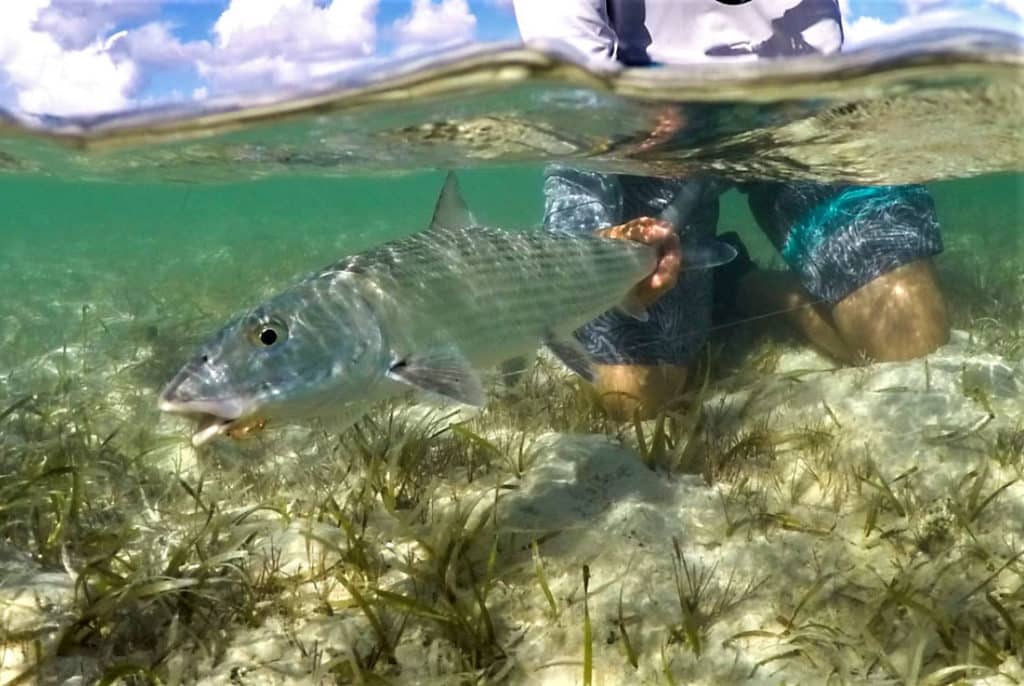
Capt. Richard Stanczyk stays busy overseeing everything at Bud N’ Mary’s Marina in Islamorada. But this time of year, when the weather cools in the Florida Keys, he always sets aside a few afternoons to take family and friends bonefishing.
Thanks to a combination of factors that has greatly improved the water quality in Florida Bay around Islamorada, flats fishing has flourished. “When I used to take people bonefishing, I would tell them, ‘I guarantee you one thing: a beautiful sunset.’ Now I can almost guarantee them a bonefish,” Stanczyk says.
One reason: Hurricane Irma, which swept through the Keys in 2017. While he emphasizes that he’s not a scientist, Stanczyk believes the storm flushed toxins out of the bay.
Before Irma, he says, “There was [something] like rust on the bay bottom. Irma churned up everything. After Irma, the flats were really beautiful.” Soon after Irma, Stanczyk saw blue crabs in new locations, and he also saw permit, which like bonefish had been extremely scarce around Islamorada.
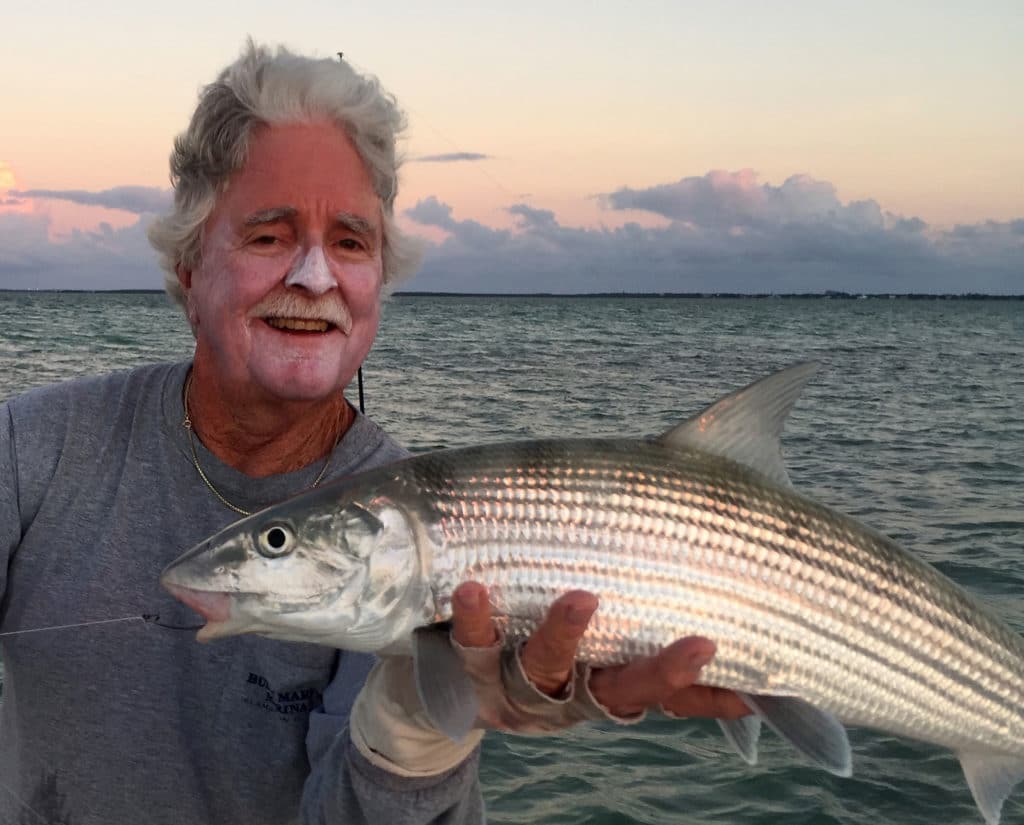
Two other things that helped the bay and the fishing: Islamorada put in a sewer system to replace its septic tanks, and the early days of the COVID-19 pandemic greatly reduced the fishing pressure and boat traffic in the Keys.
“The flats are better, there’s no question,” Stanczyk says. “The overall water quality has been the best this year that I can remember in many, many years.”
Temperature and Location
Although anglers can endure the heat and catch bonefish during the summer months, Stanczyk says fall ranks as his favorite time of the year to pursue the gray ghosts. “Temperature is important, and usually we’re just coming off extreme heat,” he explains. “You’ve got to fish real early in the morning because of the cooling effect that takes place overnight, and then there’s a window late in the afternoon.”
However, bonefish become difficult to catch on the flats when water temperatures dip below 72 degrees. When a November cold front approaches, Stanczyk says the bonefish leave Florida Bay and move to the deeper, warmer water on the ocean side of Islamorada.
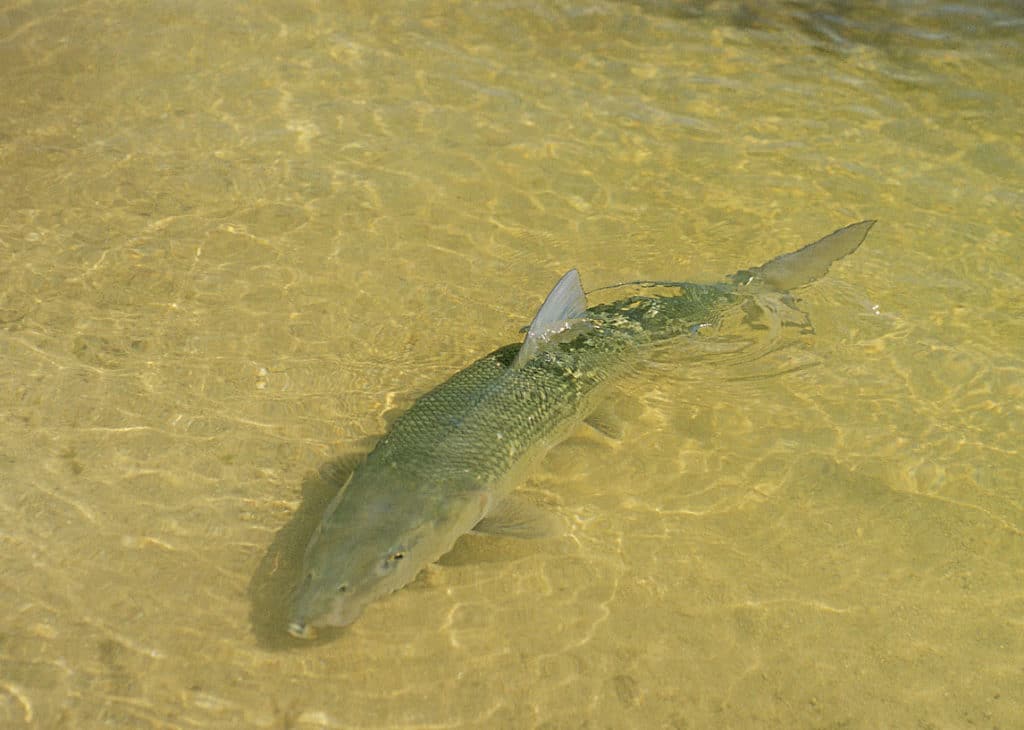
While Florida Bay’s water temperatures remain comfortable for bonefish, Stanczyk hunts a variety of flats. With more than 40 years of experience fishing those shallow waters, he has a pretty good idea of where the fish should be based on the tides and the wind direction.
He looks for a mix of healthy, green grass and sand and gravel. He avoids flats with brown, matted algae and what he calls “rusty-looking dust,” which indicates low water flow.
“Sometimes you get big broad flats, and you’ve got a lot of sunlight, and those types of flats [the fish] don’t like to commit to them so much, so they’ll stay around the edges, and that’s especially during calm weather. The wind will help you a little bit,” he says.
He also finds fish around what’s called a strip bank—where a narrow strip rises up, and the water churns as it flows over the obstruction. Fish often mill around those locations and want to feed, he says.
Staking vs. Stalking
When he first came to the Keys in the 1970s, Stanczyk exclusively fly-fished for bones. He’d propel his skiff across a shallow flat and look for tailing fish or the shadows from swimming fish.
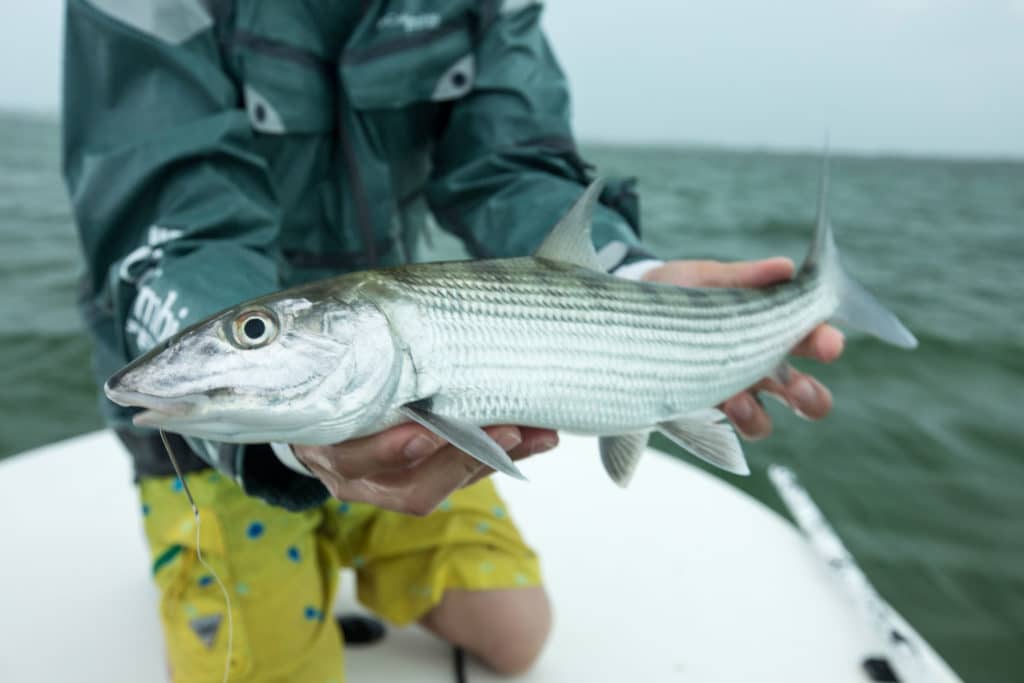
Of course, water levels have risen over the last 20 years, he notes. Bonefish flats that once featured 6 inches of water now flood with 2 or 3 feet of water, making the fish harder to see.
Some sharp-eyed backcountry guides still pole across the flats, but at this stage of his life, Stanczyk prefers a technique known as dead-boating or staking out. “Instead of me hunting them down, I let them find me,” he says.
Stanczyk eases his skiff onto a flat where he believes he’ll intercept bonefish, and where the wind and current move in the same direction. He plants his push pole in the sandy bottom and secures the boat to the pole with a rope.
Once settled, he baits two to four spinning outfits with live shrimp and casts them to specific spots on the flat.
Stanczyk thinks of the flat like a road map with one route on and off the zone. With the right conditions, he knows the bonefish will travel that route and find the shrimp.
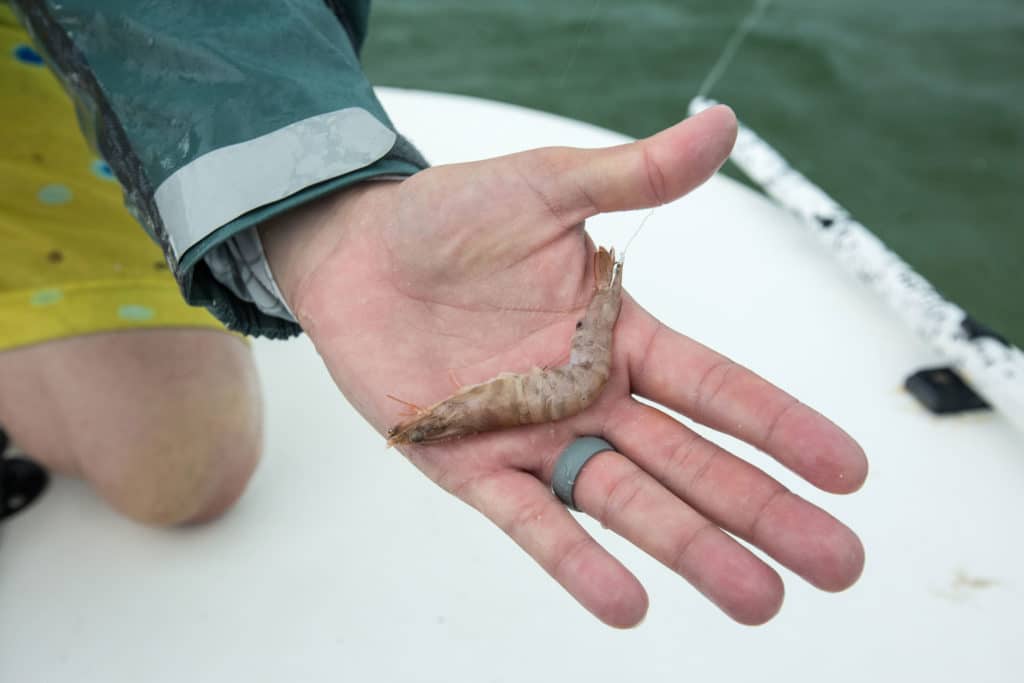
Light Tackle Fun
One of Stanczyk’s other keys to dead-boating bonefish involves putting the bait on an edge with grass and sand. That makes it easier for the fish to find the shrimp by sight and scent.
He recommends using light spinning outfits with 12-pound monofilament line. “You don’t want to over-tackle bonefish,” he says. “It takes away the excitement, the challenge and the fun.”
He places an egg sinker weighing 1/8 to 1/2 ounce, depending on the strength of the current, above a swivel tied to 12 to 18 inches of 12- to 20-pound monofilament leader. He completes the rig with a 2/0 Gamakatsu Offset Worm EWG hook. A smaller hook could be swallowed by a bonefish.
Read Next: Bonefish on Artificial Lures
Stanczyk breaks off the tail off a shrimp and threads it tail-first onto the hook, so the entire hook is concealed. After casting the shrimp, he puts the spinning outfits in rod holders and watches the tips for movement.
“What you’re really watching is the bonefish trying to pick up the shrimp,” Stanczyk says. “As he’s nosing down on your bait, he’s sending you a signal. Pick up the rod, but don’t spook him.”
When the fish takes the shrimp, reel, don’t jerk. “If he’s not there, stop reeling. He’ll pick it back up,” Stanczyk notes. “If he is there, he’s going to be off and running. Let him make his first run, because you’re not going to stop him.”
After another run or two, the bonefish tires, and that trophy comes boatside for photos. Once you notch the first fish by letting it come to you, you can try hunting and scouting. Look for tails and shadows. But if you strike out, remember, you can always stake out.








